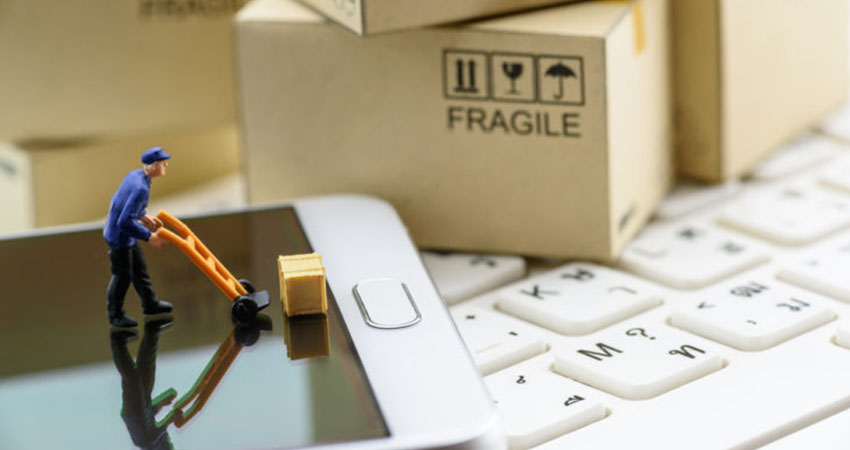When it comes to ecommerce delivery, customer expectations are constantly rising. Almost half of shoppers (46%) said the choice of a convenient and personalized delivery service is a key factor in the online buying decision stage, according to a survey by Sorted.
The takeaway: If you’re not offering flexible fulfillment to meet the needs of customers, they’ll quickly look elsewhere.
Choice Matters
But just offering a wider selection of ecommerce delivery options won’t necessarily ensure customer satisfaction. If they do decide to purchase and the delivery service isn’t convenient, this can still end up costing you. Sorted found 25% of all failed online deliveries were due to shoppers not being able to change their delivery options once an item had been shipped, showing the consequences of not offering convenience.
Keep Consumer Lifestyles in Mind
Convenience and flexibility hold a different meaning for each individual. Some look for the cheapest option possible with no preference for speed, while others need it faster and are willing to pay for a more efficient service.
So, how can you be sure you’re offering comprehensive fulfillment options that work for your customers? You need to select ecommerce delivery options with your customer’s lifestyle in mind. To demonstrate, let’s follow the online purchase journey of a large air hockey table as it travels from online checkout to its final mile.
Scenario A: “I Need It Tomorrow”
Who: A grandmother ordering a birthday present for her grandchild.
What does she expect: She wants peace of mind that her air hockey table will be delivered on time and needs help setting it up. So, she chooses a more expensive next-day delivery, adding a white-glove option that includes having it set up in the room of her choice.
The order fulfillment process: She lives in an area that is serviceable by next-day delivery, and the merchant has the air hockey table in stock so fulfillment is not a problem.
She orders the gift and within two hours the item is picked, packed and labeled for shipping. A courier picks up the package and takes it to the airport, where it’s put on a priority flight towards the grandmother’s location.
The package is picked up from the airport by a second courier and driven to a sorting branch. Within an hour, the package is put on a final truck for delivery. Thirty minutes before delivery, grandma receives a call notifying her that her package is on its way.
The package arrives by the end of the next day and is assembled in her room of choice. The delivery team removes the packaging and the air hockey table is ready for play.
Key Takeaway: Speed of delivery is vital. If an item can’t be delivered in time, your customer may move onto a competitor who does offer next-day delivery. To meet these needs, retailers need to work with their fulfillment provider to offer a later cutoff time for next-day delivery. This gives customers the flexibility they’re looking for, especially for any last-minute orders.
Scenario B: “I’d Like It This Week”
Who: A young man is looking to complete his game room by ordering an air hockey table and chooses standard air delivery.
What does he expect: A quick delivery to his door within 48 hours.
The order fulfillment process: The customer orders his air hockey table by 2 p.m. on a Tuesday. It’s picked, packed, and labeled for shipping. Within two hours it’s ready to be taken to the airport and, depending on availability, put on the first or last priority flight.
Once the priority flight lands, the package is picked up and driven to the nearest sorting branch where it can be held for up to a day. The customer is contacted via an IVR system to notify him of the package arrival and prompted to schedule a four-hour delivery window, ensuring he’s available to meet the courier.
Upon delivery, the customer checks for damage with the courier. The courier can report any issues to customer service and take it away if he rejects the package.
Key takeaway: Partnering with a logistics company that has a warehouse close to the airport can help make order fulfillment more efficient. Being able to get the product on the last flight of the day allows retailers to provide second-day ecommerce delivery, even if the destination is a substantial distance away from the distribution center.
Scenario C: “I Want the Cheapest Option Possible”
Who: A group of college students want to buy an air hockey table for their party.
What do they expect: The students choose standard ground delivery and are willing to wait a week because they don’t want any extra expenses.
The order fulfillment process: They place the order and the item is picked, packed and labeled for shipping before being put onto a truck for delivery. The long-haul ground route takes three days.
The day before the scheduled delivery date, the customer is notified of the item’s arrival via IVR, email or text and is prompted to select a delivery time slot. Five business days after the order is placed, the driver delivers the air hockey table, which doesn’t require a signature.
Key takeaway: Manage expectations throughout the delivery process to keep the customer informed. Offer an omnichannel solution to help manage the delivery supply chain. Communicate the expected delivery date and time to make it as convenient as possible.
What Your Customers Want
What they expect is flexibility and convenience. Due to the wide variance in customer demographics, behaviors and preferences, it’s essential to provide an array of ecommerce delivery options with each clearly setting the expectation level. A lack of communication – or failure to meet the SLA – leads to consumer frustration and steers those would-be buyers straight into the arms of your competitors.
Brian Bourke is Vice President of Marketing for SEKO Logistics

